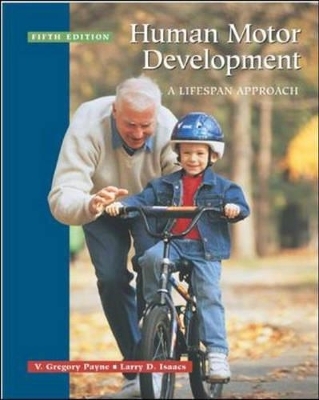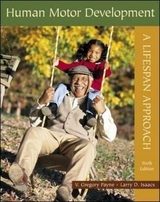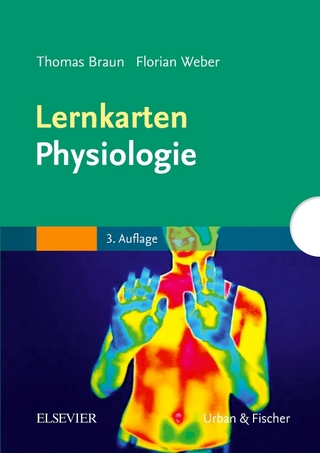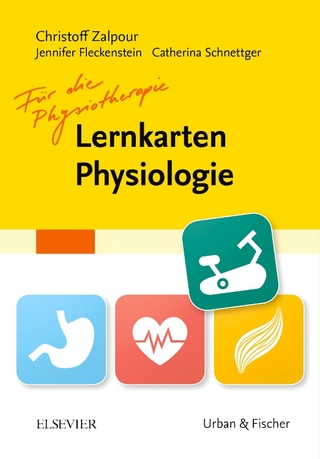
Human Motor Development
McGraw-Hill Publishing Co.
978-0-07-252571-7 (ISBN)
- Titel erscheint in neuer Auflage
- Artikel merken
Now in its fifth edition, this topically organized text provides a comprehensive introduction to lifespan motor development and includes the most current research findings available in the field.
Dept. of Biological Sciences
Preface PART I. AN OVERVIEW OF DEVELOPMENT 1. Introduction to Motor Development/Motor Behavior / Motor Development / The History of the Field of Motor Development / Current Trends in Motor Development / An Interdisciplinary Approach to Motor Development / Designing Research in Motor Development: Cross Sectional, Longitudinal, or ...? / The Domains of Human Development / The Importance of Motor Development / Development, Maturation, and Growth / General Motor Development Terms / Gross Movement and Fine Movement / The Process-Product Controversy / Terms for Age Periods Throughout the Lifespan / Stages of Development / 2. Cognitive and Motor Development / The Term Psychomotor or Motor? / Jean Piaget and Cognitive Development / Infancy: the Sensorimotor Stage and Motor Development / Childhood: Preoperations and Motor Development / Later Childhood and Adolescence: Cognitive and Motor Development / Adulthood: Postformal Operations / Adulthood: General Theories of Intellectual Development / Knowledge Development and Sport Performance / 3. Social and Motor Development / Socialization / Self-Esteem Development and Physical Activity / Social Influences During Infancy / Social Influences During Childhood / Social Influences During Older Childhood and Adolescence / Social Factors of Adulthood / The Exercise-Aging Cycle / Avoiding the Exercise-Aging Cycle / 4. Perceptual-Motor Development / What is Perceptual-Motor Development? / Balance / Spatial Awareness / Temporal Awareness / Body and Directional Awareness / Perceptual-Motor Theories: Kephart and Delacato / Researching the Effectiveness of Perceptual-Motor Programs PART II. FACTORS THAT AFFECT DEVELOPMENT 5. Prenatal Development Concerns / Drugs and Medications / Maternal Diseases / Genetic Factors / Prenatal Diagnostic Procedures / Maternal Nutrition / Birth Weight / Exercise During Pregnancy 6. Effects of Early Stimulation and Deprivation / Effects of Early Stimulation / Programs to Enhance Early Motor Development / Johnny and Jimmy / Effects of Early Deprivation / Concepts Concerning Stimulation and Deprivation PART III. PHYSICAL CHANGES ACROSS THE LIFESPAN 7. Growth and Maturation / Measuring Growth in Length and Stature / Growth in Length and Stature / Measuring Body Weight / Growth in Body Weight / Combining Body Weight and Height: Body Mass Index / Stature and Weight: Interrelationship with Motor Development and Performance / Adolescent Awkwardness / Measuring Changes in Body Proportions / Changes in Body Proportions / Body Proportions: Interrelationship with Motor Performance / Measuring Skeletal Health / Skeletal Development / Exercise, Skeletal Development, and Health / Maturation and Developmental Age / Maturation: Interrelationship with Motor Performance / 8. Physiological Changes: Health-Related Physical Fitness / Cardiovascular Fitness / Muscular Strength / Flexibility / Body Composition / Gender Differences in Health-Related Physical Fitness / Factors Associated with Physiological Fitness in Children and Adolescents / Points of Controversy and Concern / 9.Movement and the Changing Senses / Understanding the Mechanics of Vision / Physical Development of the Eye / Development of Selected Visual Traits and Skilled Motor Performance / Motor Development of Blind Children / The Nonvisual Senses PART IV. MOVEMENT ACROSS THE LIFESPAN 10. Infant Reflexes and Stereotypes / Importance of the Infant Reflexes / Pinpointing the Number of Infant Reflexes / Primitive Reflexes / Postural Reflexes / Stereotypes / 11. Voluntary Movements of Infancy / Categorizing the Voluntary Movements of Infancy / Head Control / Body Control / Prone Locomotion / Upright Locomotion / Reaching, Grasping, and Releasing / 12. Fine Motor Development / Assessing Fine Movement / Categorizing Manipulation / The Development of Prehension / An Alternate View of the Development of Prehension / Exploratory Procedures and Haptic Perception / Holding a Writing Implement / Cross-Cultural Comparison of Development of the Dynamic Tripod / The Dynamic Tripod from 6 to 14 Years / Drawing and Writing: Movement Products / Finger Tapping / Fine Motor Slowing in Late Adulthood / 13. Fundamental Locomotion Skills of Childhood / Walking / Running / Jumping / Combining Fundamental Movements: The Gallop, Slide, and Skip / 14. Fundamental Object-Control Skills of Childhood / Overarm Throwing / Catching / Striking / 15. Youth Sports / Where Children Participate in Sports / Why Children Participate in Sports / Participation: Competence Motivation Theory / Why Children Drop Out of Sports / Sport Participation: Controversies / Youth Sport Coaching / Parental Education: An Attempt to Curb Violence / Rights of Young Athletes / Youth Sports: Entering the 21st Century / 16. Movement in Adulthood / Balance and Postural Sway / Falls / Walking Patterns of Adulthood / Driving and Older Age / Adult Performance on Selected Motor Activities / Activities of Daily Living / Age of Peak Proficiency / Adult Performance During High Arousal / Movement Speed in Adulthood / Is a Movement Decline Inevitable with Age? / Teaching Movement Skill to the Older Adult / The World Health Organization Heidelberg Guidelines PART V. ASSESSING MOTOR DEVELOPMENT AND IMPLEMENTING A PROGRAM 17. Assessment / Guidelines for Assessment / Types of Assessment Instruments / Product- versus Process-Oriented Assessment: A Comparative Example / Selected Norm-Referenced Instruments / Selected Process-Oriented Assessment Instruments / Assessing the Disabled / Aids in Assessing Motor Skills / Assessing Physical Fitness / 18. Planning and Conducting Developmental Movement Programs / Preprogram Considerations / Administrative Considerations / Curricular Considerations Each chapter ends with: Summary; Key Terms; Questions for Reflection; Internet Resources; References Appendix A: Growth Charts: National Center for Health Statistics Appendix B: Body Mass Index Table Author Index / Subject Index
| Erscheint lt. Verlag | 1.9.2001 |
|---|---|
| Zusatzinfo | illustrations |
| Verlagsort | London |
| Sprache | englisch |
| Maße | 188 x 241 mm |
| Gewicht | 975 g |
| Themenwelt | Geisteswissenschaften ► Psychologie ► Entwicklungspsychologie |
| Studium ► 1. Studienabschnitt (Vorklinik) ► Physiologie | |
| Naturwissenschaften ► Biologie ► Humanbiologie | |
| ISBN-10 | 0-07-252571-1 / 0072525711 |
| ISBN-13 | 978-0-07-252571-7 / 9780072525717 |
| Zustand | Neuware |
| Haben Sie eine Frage zum Produkt? |
aus dem Bereich


